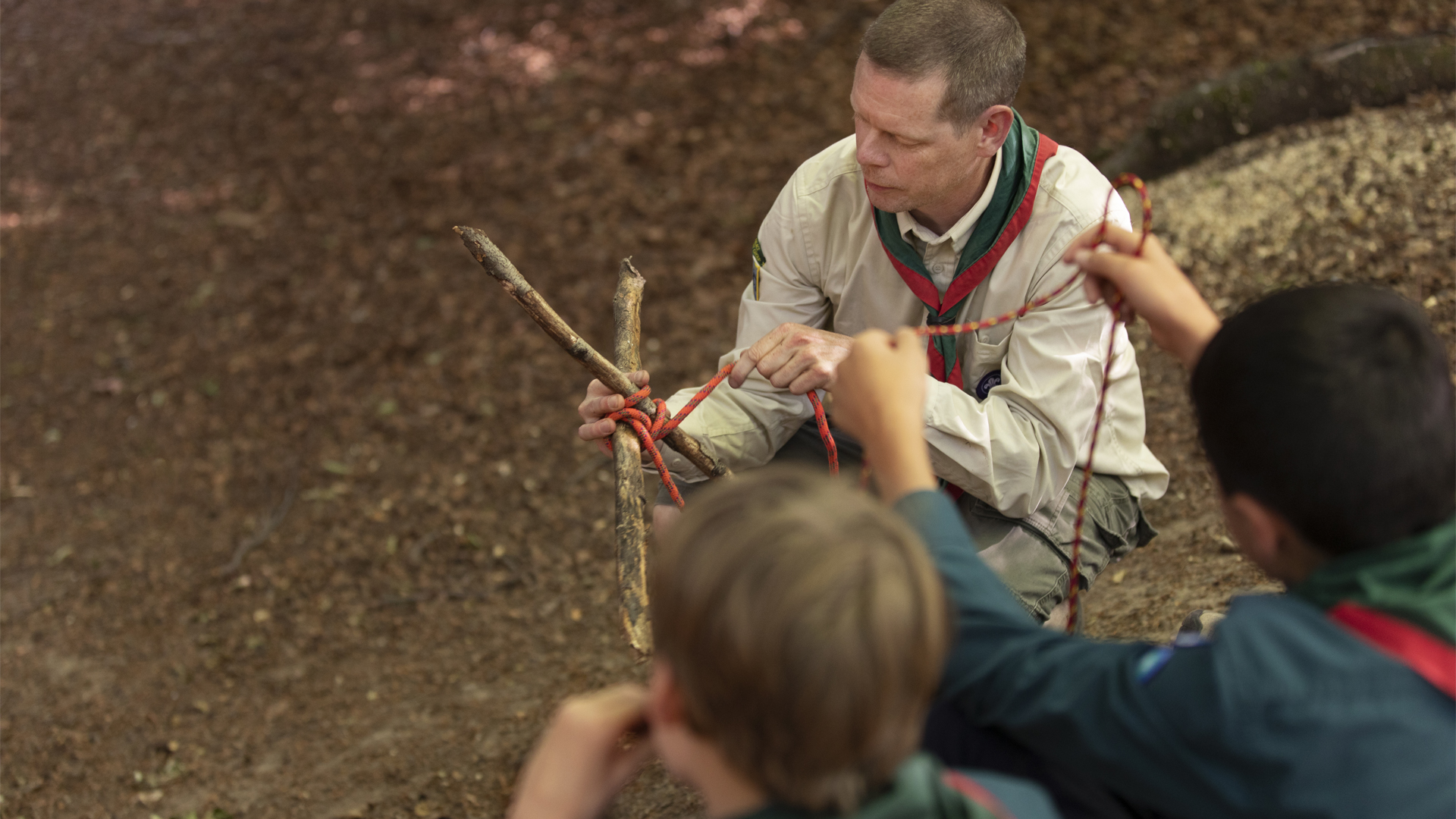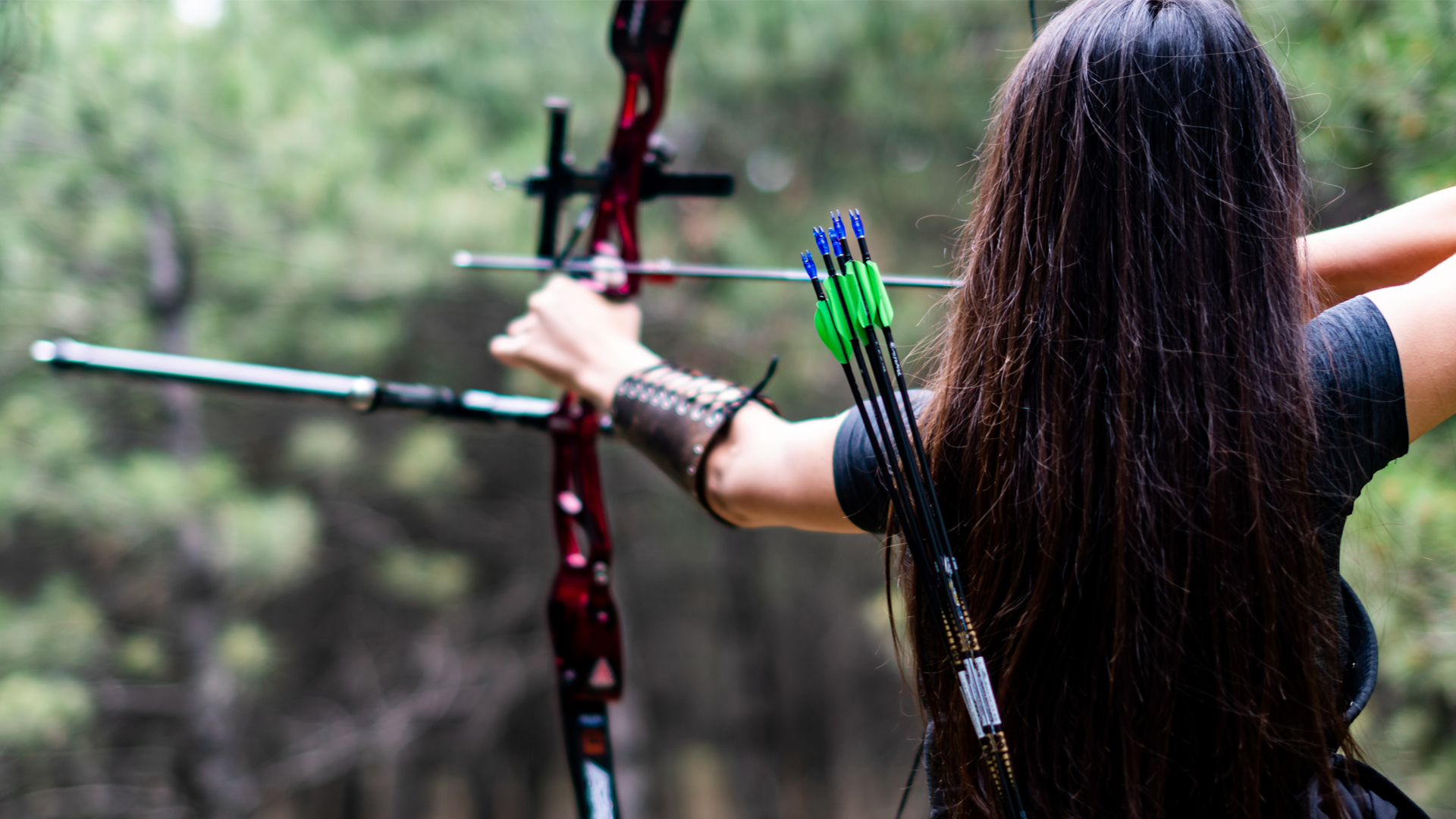
People have been making bows and arrows for thousands of years to hunt in the wild. Bows are a part of all ancient cultures and civilizations and are probably the one tool that separates us from the rest of the animal kingdom. Making really good bows is a craft that needs to be mastered over time, but if you just need a simple bow to survive in the wild, we have got you covered with our thorough yet easy-to-follow guide.
How to Make a Bow in the Forest?
Let’s say you’ve found yourself lost in a jungle and no one knows where you are. You’ll need a bow for both protection and to be able to hunt for food. A bow and arrow are an effective and helpful way of catching some food for survival.
That’s why it’s good to know how to make a bow, and we’ll show you how, with just a few simple steps.
What You’ll Need

If you’re in a forest without anything to hunt or defend yourself with, making a bow is quite logical. For example, whether you are camping in Minnesota or hiking in New Mexico Parks, making a bow in any of these situations is essentially important. However, you’ll first need to know what materials to gather and look for these materials.
Firstly, you’ll need to find a means of chopping some wood. If you have an axe, then that would be great but if not, then a sharp knife will do the trick. In order to make the bow, you’ll need:
- A log of wood about 1 meter in length and medium-sized.
- About a dozen reeds (or anything that’s a good substitute).
- A couple of flexible and soft branches
- A good place to work.
It’s important to note that the reeds are going to be used for the string of the bow, and should be flexible and bendable. If there’s nothing that you can find that’s similar to reed in characteristics, then a long grass will do just fine as a substitute.
Suggested Reading: Travel Tips
Crafting the Bow

Follow this step-by-step process for crafting the bow.
- Begin by gently ‘peeling’ the reeds and removing the center of the plant. What we want is the skin or outer surface, as it’s the part that’s thin and flexible- perfect for the flexibility needed in the string of a bow. This is done by gently tapping the reeds with the bottom of your ax a few times. Be careful not to squash the reed by hitting it too hard. If done correctly, the skin should peel off smoothly and you can set them aside together.
- When you’ve done peeling all of the reeds, you should be left with a couple of long/thin reed skins. Place these aside to dry out in the wind.
- Once they have dried out after a couple of hours, you can start to intertwine them together by placing all the reeds together and making them weave through each other. This may seem daunting, but it’s actually quite simple if you try it.
- The next step is to set the long string of intertwined reeds aside. It is now time to focus on the wood and branches and to carve them into the structure for the bow.
- The small log that you have will have to be cut and carved into a long and thin piece of wood. This will no doubt take a long time to complete but it will all be worth it in the end. Use your ax to roughly cut the log at first.
- Next, as it becomes thinner, be more cautious and try making it as smooth as possible. Remove all rough edges and be careful not to carve it too thin as it needs to be sturdy and strong as the base for the bow.
Pro Tip — Try and get your knife and ax as sharp as possible by sharpening them with a smooth stone and water. This will make the whole process a lot easier and faster. You’ll also struggle less and use less energy, which is crucial in the wild.
Strengthening the Wood

Once you’re happy with the carved wood, you can turn your attention to soft branches. This is a very important step of the whole process, so it should be followed properly. Follow the process as mentioned below.
- Using your knife, peel off the top/rough layer on the branches. You could peel off a few more layers if the branch is thick. Set them aside to dry for a short while- enough time for you to make a small fire. The fire is needed to strengthen the wood whilst making it flexible. It’s an ancient technique used all over the world, but it must be done correctly.
- Place the stick over the flames, just far enough for it not to catch fire. Remove it after a few seconds and bend it in the direction you want.
- Repeat this process a couple of times until you’re satisfied with the result. The reason for this step is to strengthen and improve the flexibility of the stick/branch and not burn it. Therefore the extra precaution in this step.
- Next, take the piece of wood that you carved from the log and place it over the fire. Again, it shouldn’t be placed too close to the fire as it will burn, and not so far away from the fire that it fails to get the heat treatment it needs. It should be placed about 60 centimeters or an arm’s length above the fire. This will allow the heat and smoke of the fire to strengthen the wood and allow for some flexibility as needed in a bow.
- This part of the process requires a couple of hours to complete, so we recommend that you start this as soon as you can. As it is a large piece of wood, it will require between 6-8 hours before it is ready.
Pro Tip — Do not rush this and try to find a ‘quick’ alternative because it’s better to ensure that you have a strong/sturdy bow. Rushing these crucial steps will result in a weak frame for your bow, as well as not providing the flexibility required.
Complete the Final Touches

Once the heat treatment for your bow structure is complete, you’ll be done with all the hard bits. All that’s left is a few simple steps, and you’ll be ready to go. Take your ax or knife and peel away the burnt bits of wood and just try and shape your piece of wood into a bow shape. It should not be straight, but rather curved inwards in the middle.
It is very easy to achieve this shape by simply ‘peeling’ away at the wood in order to achieve your intended curved shape. You could imagine it as if you were peeling a carrot into a bow shape, with more peeling being done in the middle of the carrot.
Once you have done this and are completely satisfied with your bow handle and you’ve made sure that it’s smooth, you should be left with a long, thin, and flexible piece of wood. This means that it’s not more than a few inches thick. Smoothing out the handle is very important, as you don’t want any splinters while hunting, and a smooth grip means a better grip.
Recommended Reading: Best Spots For Camping in Laguna Beach
Attach the Rope

It is now time to attach the rope- that you made out of reeds earlier- to the bow handle. There are a couple of ways of doing this, but the best and simplest way is what I’ll be telling you.
- Firstly, you’ll need to thin out the edges of the handle and make it about half the size of the rest of the handle.
- Next, take the thin rope and tie a simple knot to both the top and bottom sides of the handle. The rope should be very tight and it should be compressing the handle into a bent shape from its original straight shape.
- Whilst the rope should be tight, forcing it to be too tight will cause the rope to snap, resulting in a broken rope. If this does happen, you might be able to salvage the same rope by connecting the two broken pieces together. This, however, will weaken the reliability of your bow, and you’ll need to get the rope replaced sooner or later.
Hopefully, you’ll get the rope tight on the first try and you’ll have a good, strong bow to help you catch some food. The only thing that’s left is for you to make an arrow. Thankfully, that is quite easy, since you’ve already done the hard bits for that as well.
Editor’s Pick: Why Do My Feet Swell When I Travel?
How to Make Arrows for Your Bow?

Remember those small branches/ sticks that you prepared over the fire as well? Well, those are what we’ll be using for arrows. Of course, there’s work to be done on them to make them fit for use, but that’s just the easy stuff left.
- Firstly, look around for some large feathers of any bird. These need to be placed around the back of the arrows and make them more aerodynamic and faster through the air.
- Once you have found a couple of large feathers, cut each feather straight in half diagonally. This is because you only need the soft feathery bit and not the hard bit. Wrap as many as needed around the end of each arrow, and tie it fast using some of the rope that you made earlier.
- The next step is to shape the tip and the body of the arrow to make it more streamlined and make it look like an arrow. The tip needs to be as sharp as possible and the body needs to be thin but strong at the same time. If it’s too thin, it won’t be strong enough and if it’s too thick, it won’t fly fast through the air. We advise you to experiment and see which size of arrow works best.
- Now you’re ready to use that bow to hunt. The only thing left is for you to practice with it for a while before actually going to hunt. The best way to do this is to stand a couple of yards away and just practice shooting at a tree. Once you get comfortable with a certain distance, you can always increase the distance and narrow down your target.
The final test should be for you to place a small log onto the ground about 25 yards away, and try to hit the target. If you pass the test, congratulations! You have successfully made a bow in the forest.
For more such travel guides, be sure to visit our section Travel Explained.
Conclusion
Making a bow in the forest is quite simple, especially if you follow the right process. While it’s not necessary in most cases, it’s a helpful survival skill as you may struggle to hunt and protect yourself if you ever get lost in the forest.
How to Make a Bow in the Forest - FAQs
You can use any type of hardwood to make a bow. It’s best to stay away from any type of softwood as it isn’t flexible enough and will snap easily. Oak, maple, and hickory woods are ideal for making bows due to their strength and availability.
There’s no restriction on how light or heavy your bow should be, but it’s better to make a lighter bow if you’re stuck in the forest. Lighter bows are easier to carry and use, especially if you aren’t an expert marksman.
You can use the same type of wood for a bow and arrow. Ideally, the wood should be dry, but thick enough not to break when you craft the arrow. Any type of hardwood is ideal for making arrows, but oak and hickory woods work best.
The best way to make a bow flexible is to slowly heat the wood over a fire and peel off the outer layer of the wood. You can also choose more flexible woods and avoid softwoods as they snap easily.






